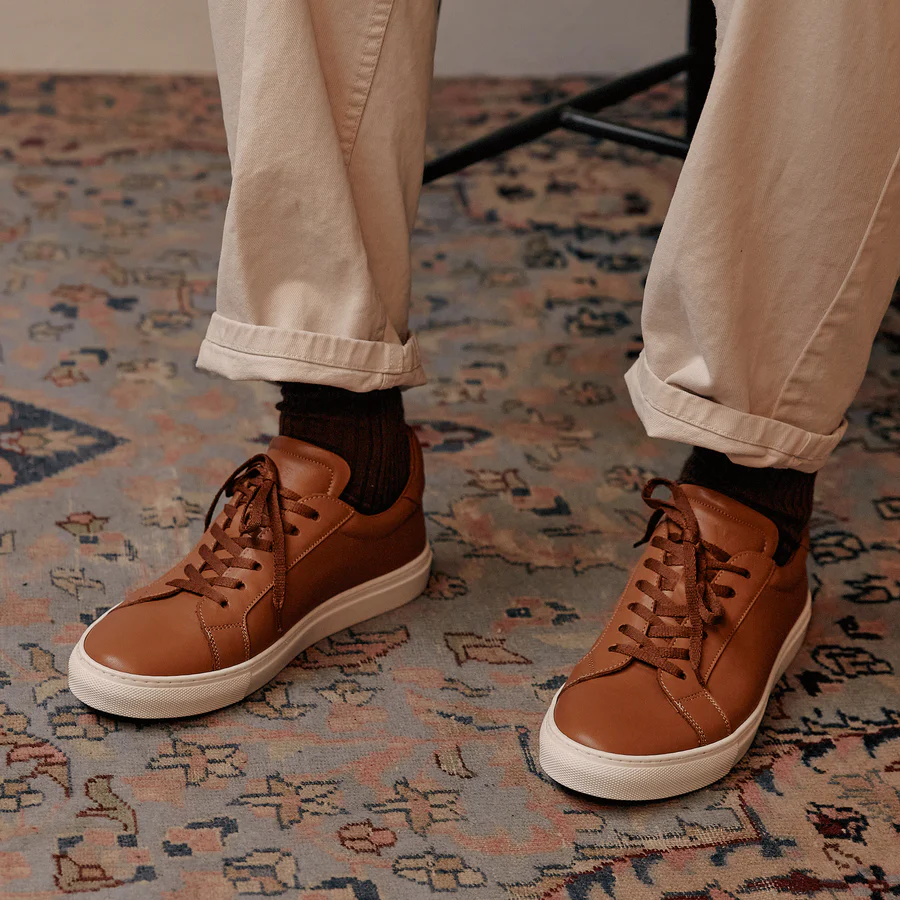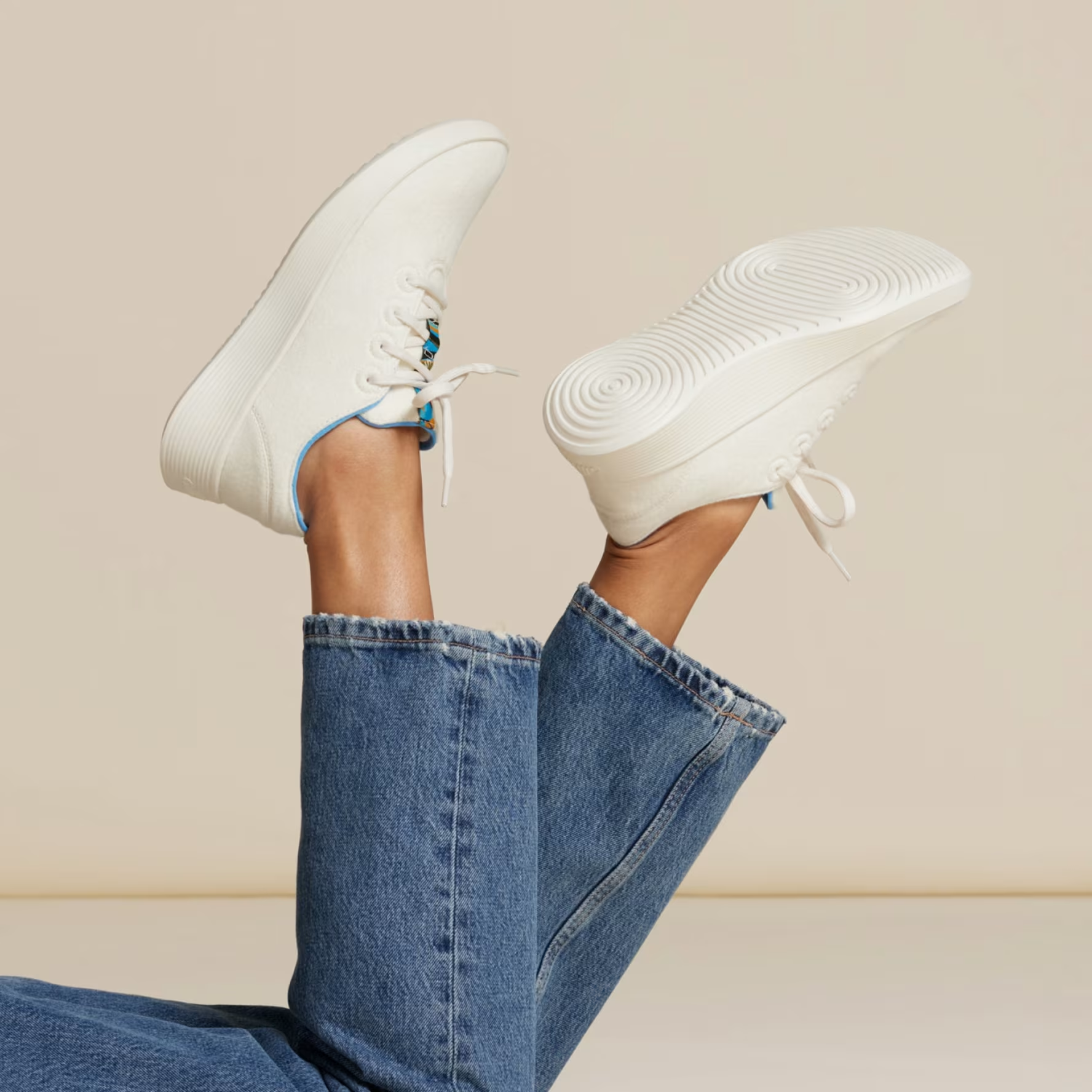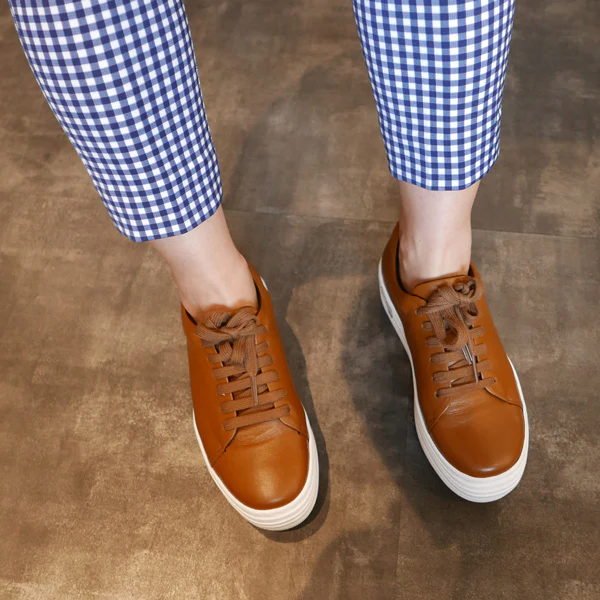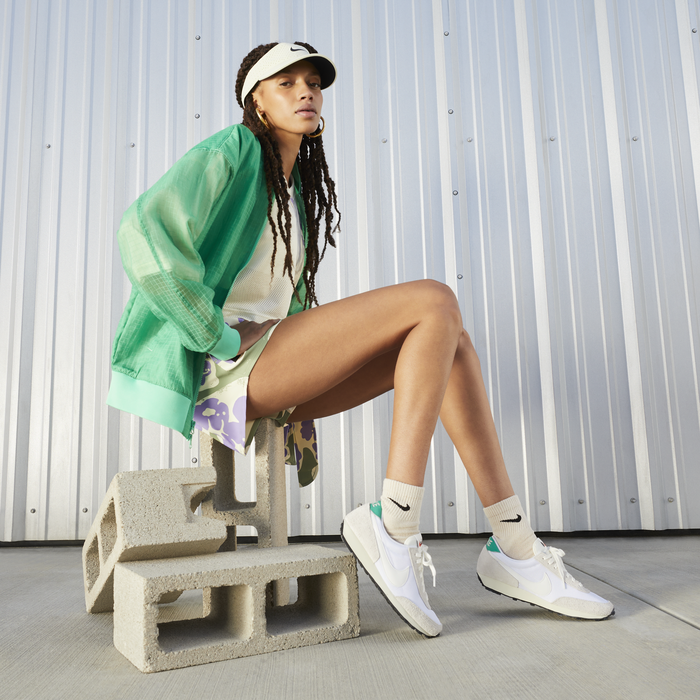
Casual Sneakers: Comfort Meets Style in Modern Footwear
The Evolution of Sneakers: From Sport to Street
Casual sneakers have transformed from purely functional athletic gear to versatile fashion staples. This evolution traces back to the early 20th century when sneakers were primarily designed for sports and physical activities. As decades passed, these comfortable shoes gradually found their way into everyday wardrobes. The turning point came in the 1970s and 1980s when popular culture, particularly music and sports icons, began showcasing sneakers as part of their casual attire.
This shift marked the beginning of sneakers’ journey from the gym to the streets, paving the way for the casual sneaker phenomenon we see today. Brands started to recognize the potential of this trend, leading to collaborations with artists, designers, and celebrities, further blurring the lines between sportswear and fashion.
Design Philosophy: Blending Comfort and Aesthetics
The core philosophy behind casual sneakers revolves around combining comfort with style. Designers focus on creating shoes that not only look good but also provide all-day comfort for various activities. This approach involves using advanced materials like memory foam insoles, breathable mesh uppers, and lightweight, flexible soles. The aesthetic aspect of casual sneakers often draws inspiration from classic athletic designs, retro styles, and contemporary fashion trends.
Designers play with colors, textures, and silhouettes to create visually appealing shoes that complement a wide range of outfits. The result is a product that serves both form and function, appealing to consumers who prioritize comfort without sacrificing style. This balance has been key to the widespread adoption of casual sneakers across different age groups and fashion sensibilities.
Materials and Technology: Innovations in Comfort
The evolution of materials and technology has played a crucial role in the popularity of casual sneakers. Modern sneakers incorporate a range of innovative materials designed to enhance comfort, durability, and performance. Memory foam and gel inserts provide customized cushioning, adapting to the wearer’s foot shape for optimal support. Breathable fabrics like engineered mesh and knit materials offer ventilation, keeping feet cool and dry.
Advances in sole technology, such as the use of EVA (Ethylene-Vinyl Acetate) and responsive foams, provide superior shock absorption and energy return. Some brands have even integrated sustainable materials, like recycled plastics and eco-friendly fabrics, appealing to environmentally conscious consumers. These technological advancements not only improve the wearing experience but also extend the lifespan of the sneakers, making them a practical choice for everyday wear.
Versatility in Fashion: From Casual to Smart-Casual
One of the key attributes of casual sneakers is their versatility in fashion. These shoes effortlessly bridge the gap between ultra-casual and smart-casual attire, making them suitable for a wide range of occasions. Paired with jeans and a t-shirt, they epitomize relaxed, everyday style. However, the same sneakers can often be worn with chinos and a blazer for a more polished look, suitable for many workplaces and social events.
This adaptability has made casual sneakers a go-to choice for people navigating varied dress codes in their daily lives. The fashion industry has embraced this versatility, with high-end designers and luxury brands introducing their own lines of casual sneakers. This trend has further legitimized sneakers as acceptable footwear in more formal settings, breaking down traditional fashion barriers.
Cultural Impact and Celebrity Endorsements
The cultural impact of casual sneakers extends far beyond mere fashion. These shoes have become symbols of personal expression, lifestyle choices, and even social status. Celebrity endorsements and collaborations have played a significant role in elevating casual sneakers to cultural icon status. Athletes, musicians, and actors often partner with sneaker brands to create signature lines or limited edition releases, driving consumer interest and creating a collector’s market.
Social media has amplified this effect, with influencers and celebrities showcasing their sneaker collections and styling choices to millions of followers. This constant exposure has reinforced the position of casual sneakers as must-have items in many people’s wardrobes. The sneaker culture has also given rise to phenomena like “sneakerheads” – enthusiasts who collect and trade rare and limited-edition sneakers, further cementing the cultural significance of these shoes.
Health and Wellness Considerations
The rise of casual sneakers aligns with a growing focus on health and wellness in society. As more people prioritize physical activity and comfort in their daily lives, casual sneakers have emerged as the perfect footwear solution. Podiatrists and orthopedic specialists often recommend sneakers for their supportive qualities, especially for individuals who spend long hours on their feet. The cushioning and arch support provided by well-designed casual sneakers can help prevent foot fatigue, reduce the risk of injuries, and alleviate symptoms of common foot problems.
This health aspect has broadened the appeal of casual sneakers beyond fashion-conscious consumers to include those prioritizing foot health and overall well-being. Some brands have even developed lines specifically targeting comfort and support for different foot types and conditions, further blending the lines between casual fashion and therapeutic footwear.

Sustainability and Ethical Production
As environmental concerns become increasingly prominent, the casual sneaker industry has begun to address sustainability and ethical production. Many brands are now incorporating eco-friendly materials, such as recycled plastics, organic cotton, and sustainably sourced rubber, into their sneaker designs. Some companies have gone further by implementing zero-waste manufacturing processes or using renewable energy in their production facilities.
Ethical production practices, including fair labor conditions and transparency in the supply chain, have also become important factors for conscientious consumers. This shift towards sustainability not only appeals to environmentally aware customers but also challenges the industry to innovate in materials and production methods. As a result, casual sneakers are evolving not just in style and comfort, but also in their environmental and social impact, reflecting broader societal values.
The Future of Casual Sneakers: Trends and Predictions
The future of casual sneakers looks promising, with several trends shaping the industry’s direction. Customization is becoming increasingly popular, with brands offering options for consumers to design their own sneakers, choosing colors, materials, and even performance features. Technology integration is another emerging trend, with some companies experimenting with smart sneakers that can track fitness data or adjust fit via smartphone apps. The line between athletic and casual sneakers is likely to blur further, with performance features being incorporated into everyday styles.
Sustainability will continue to be a driving force, potentially leading to innovations in biodegradable materials and circular economy models for sneaker production and recycling. As urban lifestyles evolve, casual sneakers are expected to adapt, potentially incorporating features for specific city environments or climate conditions. The global sneaker market is projected to continue its growth, with casual sneakers remaining at the forefront of this expansion.
The Global Market and Economic Impact
The casual sneaker industry has grown into a significant global market, with substantial economic impacts. Major sneaker brands have become multinational corporations, influencing fashion trends and consumer behavior worldwide. The market spans from affordable, mass-produced sneakers to high-end, limited edition releases that can fetch prices comparable to luxury goods. This range has created diverse market segments, catering to different consumer preferences and budgets.
The sneaker resale market has also emerged as a notable economic force, with some rare sneakers appreciating in value over time. This secondary market has given rise to new business models, including authentication services and sneaker investment platforms. The economic influence of casual sneakers extends to retail, with specialized sneaker stores becoming common in urban centers and malls. The industry’s growth has created jobs not only in manufacturing but also in design, marketing, retail, and e-commerce sectors, contributing significantly to the global economy.
The casual sneaker phenomenon represents more than just a fashion trend; it reflects broader shifts in societal values, lifestyle preferences, and consumer behavior. From their humble beginnings as sports equipment, sneakers have evolved into versatile fashion items that cater to a wide range of needs and preferences. The blend of comfort and style that casual sneakers offer has resonated with consumers across different age groups and demographics, making them a ubiquitous presence in wardrobes worldwide.
The design philosophy behind casual sneakers, which prioritizes both aesthetics and functionality, has been key to their widespread adoption. By incorporating advanced materials and innovative technologies, sneaker brands have created products that can withstand the demands of daily wear while still looking stylish. This combination of durability, comfort, and fashion appeal has made casual sneakers a practical choice for many consumers, contributing to their popularity in various settings, from casual outings to more formal occasions.

Conclusion
Looking to the future, the casual sneaker industry shows no signs of slowing down. Emerging trends such as customization, technology integration, and continued focus on sustainability are likely to shape the next generation of casual sneakers. These developments promise to keep the industry dynamic and responsive to changing consumer preferences and societal needs.
The economic impact of the casual sneaker industry is substantial, influencing various sectors of the global economy. From manufacturing and retail to marketing and e-commerce, the industry has created diverse employment opportunities and contributed significantly to economic growth in many regions. The emergence of the sneaker resale market has added another layer to this economic impact, creating new business models and investment opportunities.
In conclusion, casual sneakers have transcended their original purpose to become a significant cultural and economic phenomenon. Their evolution reflects changes in fashion, technology, societal values, and consumer behavior. As they continue to adapt and innovate, casual sneakers are likely to remain a central part of global fashion and lifestyle trends for the foreseeable future, continuing to influence how people dress, shop, and express themselves through their footwear choices.



